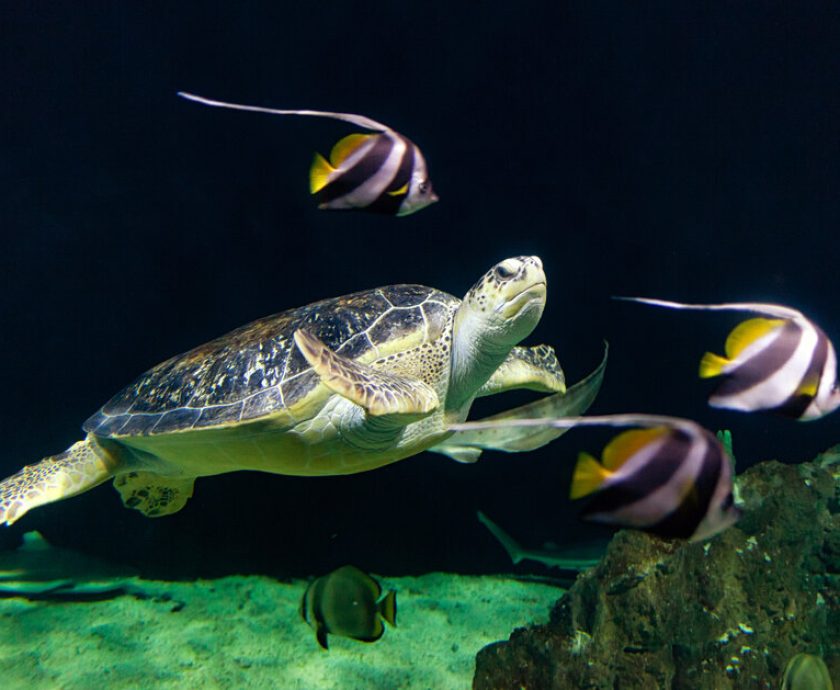Recent reports highlight a critical situation for sea turtle nesting beaches, particularly in regions like Suriname and Florida, where climate change and human activities threaten these vital habitats. The loss of nesting sites is alarming, as it directly impacts the survival of various sea turtle species. In this blog, we will explore the current challenges facing sea turtle nesting beaches and the urgent actions needed to protect them.
Table of Contents
The Importance of Nesting Beaches
Nesting beaches are crucial for the reproductive success of sea turtles. Female turtles return to the beaches where they were born to lay their eggs, making these locations essential for the continuation of their species. Unfortunately, many of these beaches are under threat from various factors, including climate change, coastal development, and pollution.
Key Species at Risk
The leatherback turtle, green turtle, and olive ridley turtle are among the species that rely on these nesting sites. For instance, Braamspunt in Suriname is one of the last major nesting sites for leatherback turtles, with 90% of the local population nesting there. However, this beach is rapidly eroding due to climate change and sand mining activities.
Climate Change and Erosion
One of the most pressing issues facing nesting beaches is climate change. Rising sea levels and increased storm frequency exacerbate coastal erosion, threatening the very existence of these vital habitats.
Case Study: Braamspunt Beach
Braamspunt Beach is experiencing severe erosion that could lead to its disappearance. Research indicates that climate change is responsible for accelerating this erosion, with predictions suggesting a loss of 53% of sandy beach land across the Caribbean by 2100. The degradation of this beach not only threatens the nesting success of sea turtles but also disrupts marine ecosystems that depend on healthy coastal environments.
Human Activities Impacting Nesting Sites
In addition to climate change, human activities such as sand mining and coastal development significantly impact nesting beaches.
Sand Mining Dangers
The extraction of sand for construction has led to significant degradation of Braamspunt Beach. This practice not only affects sea turtle populations but also compromises coastal defenses against rising seas. As turtles struggle to find suitable nesting sites, their populations face increased pressure from habitat destruction.
Coastal Development
Unregulated coastal development poses another threat to nesting beaches. Construction projects can lead to habitat loss and increased light pollution, which disorients nesting females and hatchlings. It is crucial to implement sustainable development practices that prioritize the protection of these essential habitats.
Conservation Efforts Underway
Organizations and governments are taking steps to address these challenges and protect sea turtle nesting beaches.
Protecting Nesting Sites
Efforts are being made to safeguard critical nesting areas through protective measures such as beach patrols and nest relocation programs. For example, organizations like SEE Turtles an us (SOS Turtles) work with local communities to monitor nests and ensure their safety from predators and environmental threats.
Community Involvement
Engaging local communities in conservation efforts is essential for long-term success. By educating residents about the importance of nesting beaches and involving them in protection initiatives, organizations can foster a sense of stewardship that benefits both sea turtles and local ecosystems.
The Role of Technology in Conservation
Innovative technologies are playing a crucial role in monitoring and protecting nesting beaches.
AI-Powered Monitoring
AI technology is being used to track sea turtle populations and monitor nesting activities more effectively. Tools like drone surveillance can provide real-time data on nesting sites, helping conservationists respond quickly to potential threats.
Data Collection and Analysis
Collecting data on nesting success rates, hatchling survival, and environmental conditions allows researchers to make informed decisions about conservation strategies. This data-driven approach ensures that efforts are targeted where they are needed most.
Challenges Ahead
Despite ongoing conservation efforts, significant challenges remain in protecting sea turtle nesting beaches.
Funding Limitations
Many conservation programs rely on donations and grants, which can be unpredictable. Securing consistent funding is essential for maintaining ongoing protection efforts for nesting sites.
Climate Change Mitigation
Addressing climate change requires global cooperation and commitment. While local efforts can make a difference, comprehensive strategies at national and international levels are necessary to combat the root causes of climate change affecting sea turtle habitats.
Call to Action
Protecting sea turtle nesting beaches requires immediate action from individuals, organizations, and governments alike. Here’s how you can help:
- Support Conservation Organizations: Donate to organizations dedicated to protecting sea turtles and their habitats.
- Participate in Local Cleanups: Join beach cleanups to reduce plastic pollution that threatens marine life.
- Advocate for Sustainable Practices: Encourage local governments to adopt policies that protect coastal ecosystems from harmful development practices.
- Educate Others: Raise awareness about the importance of sea turtles and their nesting habitats within your community.
Conclusion
The plight of sea turtle nesting beaches underscores the urgent need for action in conservation efforts. With threats from climate change and human activities looming large, it is essential that we come together as a global community to protect these critical habitats.By supporting conservation initiatives and advocating for sustainable practices, we can help ensure a future where sea turtles continue to thrive on our shores. The survival of these magnificent creatures depends on our collective efforts today—let’s make sure we take action before it’s too late!
For the most current information, explore our homepage to learn about our mission, initiatives, and how you can get involved in sea turtle conservation!











